How to Make Green Dye at Home with Natural Ingredients
Struggling to find a safe, natural green dye? You’re not alone! Did you know that many plants and vegetables such as spinach can provide vibrant, organic dyes? This article will guide you step-by-step on how to make green dye at home using everyday household items.
Ready to dive in? Let’s get started!
Key Takeaways
- You can make green dye at home using plants and vegetables like spinach, grass, mint leaves, artichokes, black-eyed Susan, and chamomile leaves.
- Boiling the leaves with water is a simple method to create natural green dye. Simmer the chopped leaves in water for an hour to infuse the color into the water.
- Try over – dyeing blue with yellow using indigo to create vibrant shades of green.
- Modify the colors by adding different ingredients or changing the pH level to achieve custom shades of green.
How to Make Green Dye at Home?
To make green dye at home, you can use various natural materials. When using natural materials to create dyes, it’s important to follow specific instructions for each type of material to achieve the desired color. The amount of plant material, the dyeing process, and the use of mordants can all affect the final result.
Types of Natural Green Dyes
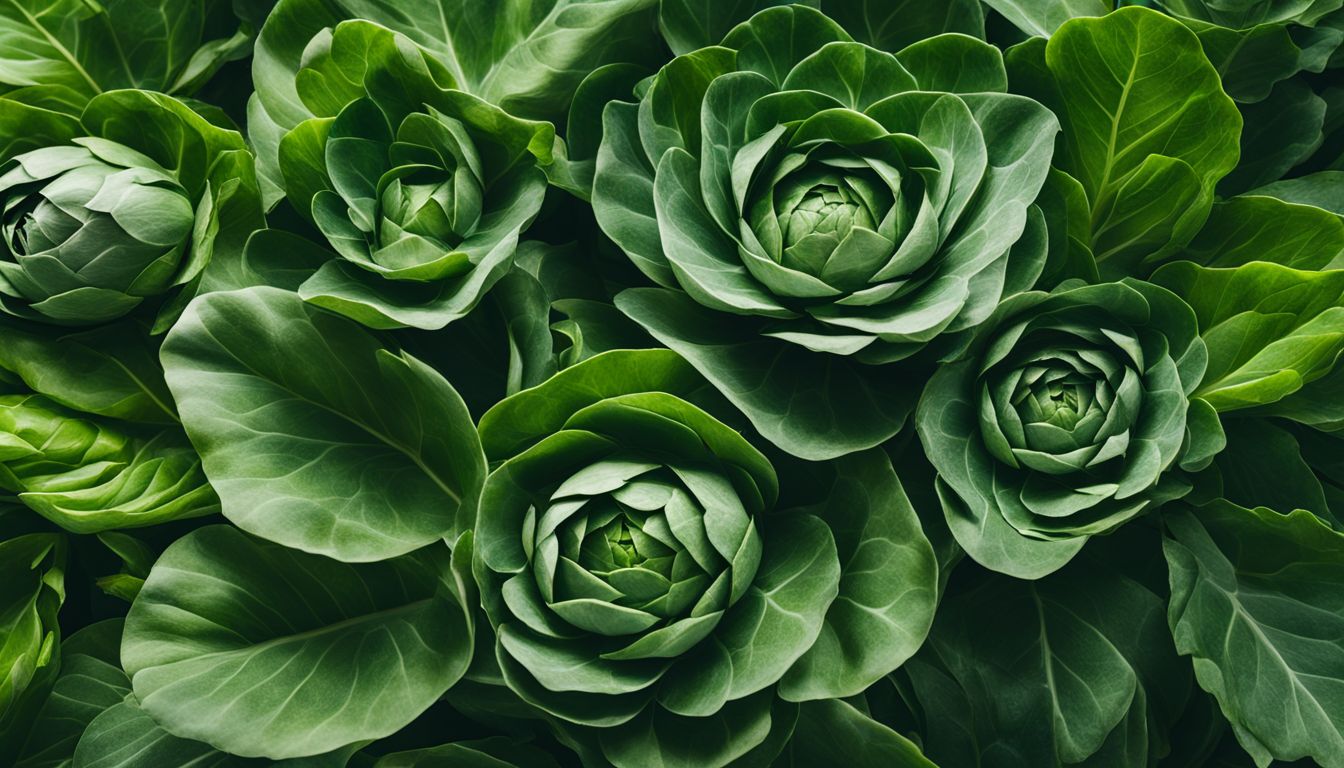
Artichokes
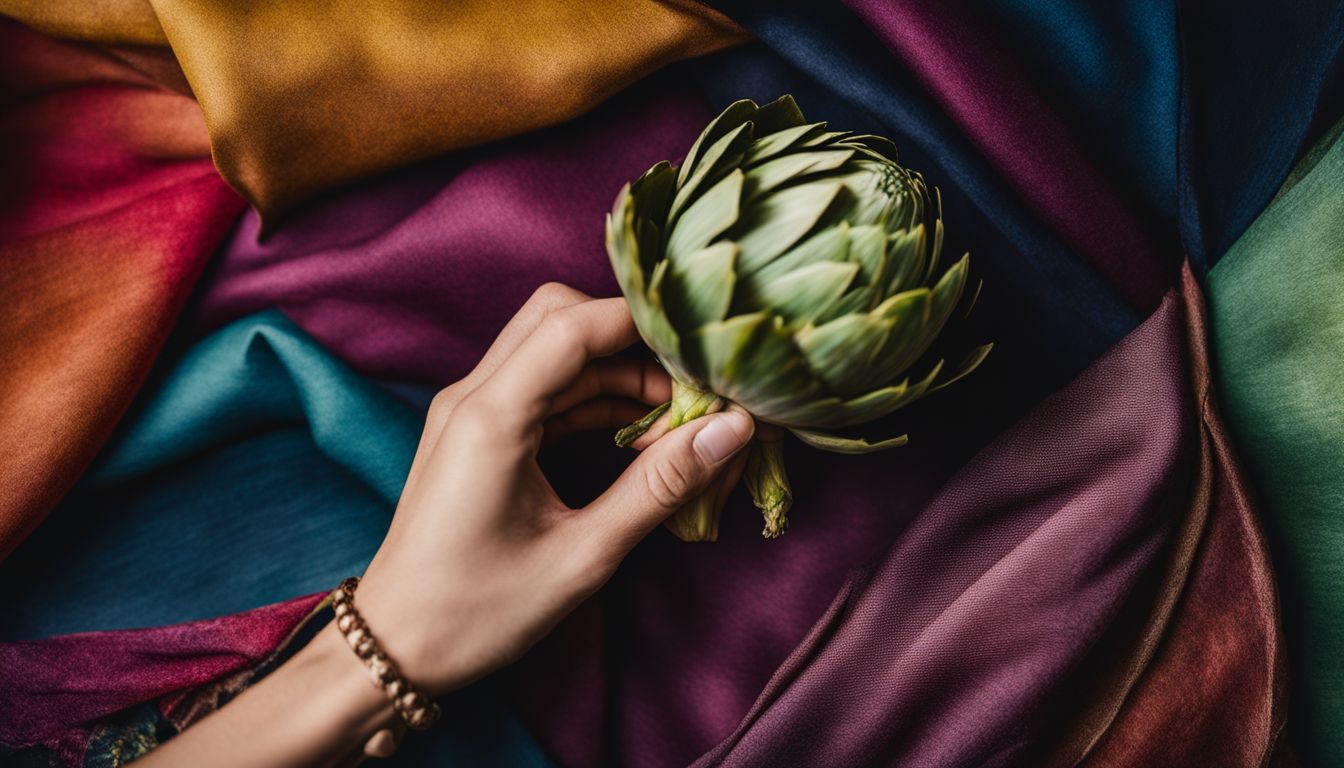
Artichokes are great for making green dye. This plant’s leaves give a beautiful, deep color. For this, boil the artichoke leaves in water. The hot water pulls out the color from the plants and makes a dye bath.
You can use this green dye for coloring clothes or crafts at home. It is a safe and natural way to add color to items!
Black-eyed Susan
Black-eyed Susan is a type of plant that can be used to make green dye at home. It has bright yellow flowers and dark centers, which contain the dye-producing pigment. To create the green dye, you can boil the black-eyed Susan leaves with water.
This method will result in a light green color that can be used for various purposes like fabric dyeing or crafting. Black-eyed Susan is one of the many plants that you can use to create natural dyes at home, providing an eco-friendly alternative to synthetic dyes.
So next time you see these vibrant flowers in your garden or during a walk, remember that they can also be used to make beautiful shades of green!
Chamomile Leaves
Chamomile leaves are another great option for making green dye at home. Simply boil the chamomile leaves with water to create a light green color. Chamomile is not only known for its soothing properties, but it can also be used to add a natural touch of green to your fabrics or crafts.
It’s an easy and accessible ingredient that can be found in most kitchen pantries or easily purchased from stores. So why not give chamomile leaves a try when creating your homemade green dye?.
Grass
Grass is a common plant that can be used to make green dye at home. You can collect fresh grass clippings and boil them with water to create a light green dye. The longer you simmer the grass, the darker the color will become.
After boiling, strain out the grass and let the dye cool before using it. Grass is an easily accessible and natural ingredient for making your own homemade green dye.
Mint
Mint is another plant that can be used to make natural green dye at home. Mint leaves and stems can produce a vibrant shade of green when boiled with water. This method is simple and accessible, as mint is a common herb that can easily be found in grocery stores or grown in your own garden.
By using mint to create green dye, you can add a touch of freshness to your homemade projects while also embracing a more sustainable and eco-friendly lifestyle.
Spinach
Spinach is a versatile leafy green that can be used to make natural green dye at home. It contains pigments called chlorophyll, which gives it its vibrant green color. To create a natural dye from spinach, you will need to chop the spinach leaves and simmer them in water for about an hour.
This will help release the chlorophyll and create a dark green liquid dye. Once the dye has cooled, it can be strained and used to dye fabrics or other materials.
Using spinach as a natural dye not only adds color but also provides additional nutritional benefits. Spinach is rich in fiber and Vitamin C, making it a healthy option for DIY projects like fabric dyeing.
Methods to Make Natural Green Dye
Boil leaves with water, try indigo over-dyeing with yellow, or use mint leaves and/or stems.
Boiling leaves with water

Boiling leaves with water is a simple and effective method to make natural green dye at home. All you need to do is gather the leaves of plants that produce green pigments, such as spinach or grass.
Next, chop the leaves into small pieces and put them in a pot with water. Bring the mixture to a boil and let it simmer for about an hour. During this time, the color from the leaves will infuse into the water creating a light green dye.
Once done, strain out the leaves and you’ll be left with your homemade green dye ready to use on fabrics or other materials. It’s important to remember that when disposing of both the plant material and dye bath, proper care must be taken to avoid contaminating any bodies of water or harming the environment.
Indigo over-dyeing with yellow
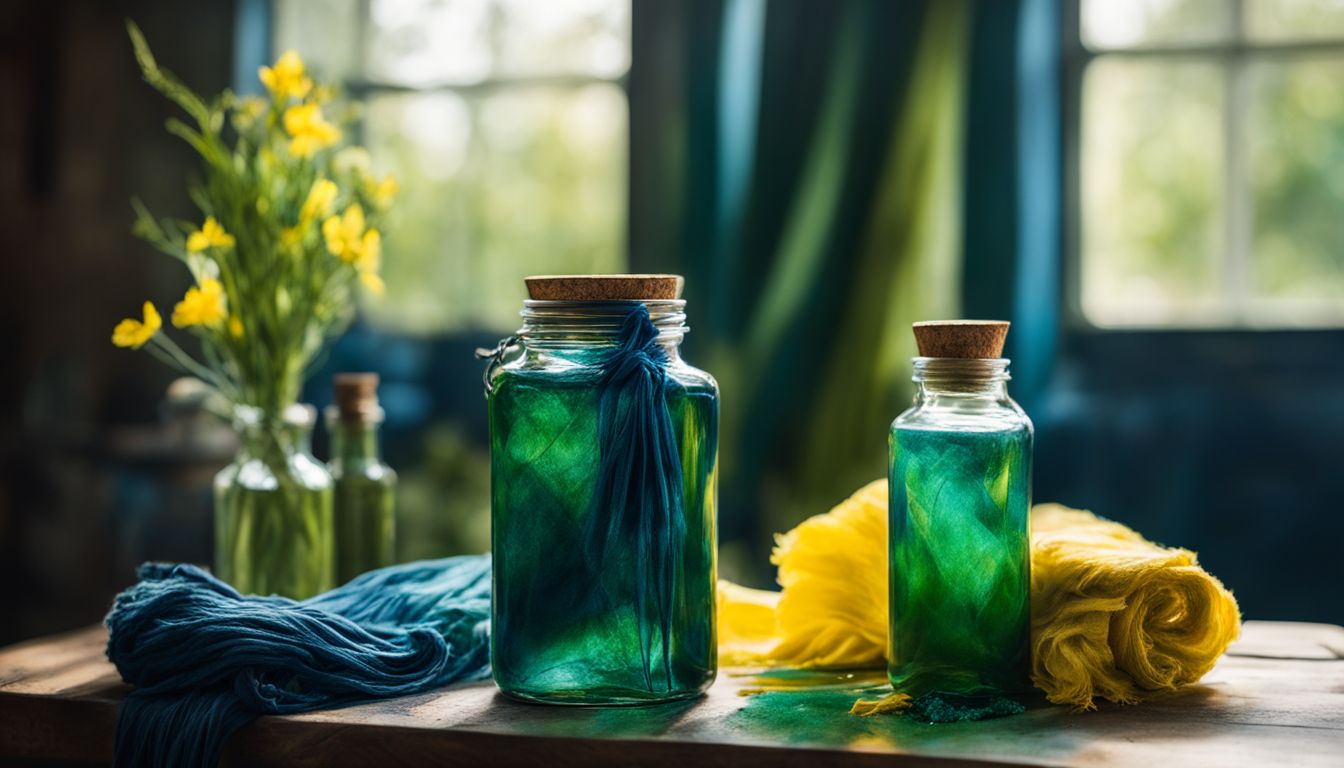
To create a vibrant green dye at home, you can try the method of indigo over-dyeing with yellow. First, make a blue dye using indigo. Then, take your blue-dyed fabric and dip it into a yellow dye bath.
The combination of the two colors will result in a beautiful green shade. This technique allows you to experiment with different shades of green by adjusting the intensity of the yellow dye or varying the amount of time you leave your fabric in the bath.
It’s an exciting way to create unique and eco-friendly green dyes right in your own home.
Using mint leaves and/or stems

To create green dye at home, you can use mint leaves and/or stems. Mint is a common herb found in many households, making it an easily accessible ingredient for homemade dyes. To start, gather a bunch of fresh mint leaves and stems.
Chop them into small pieces to release the natural pigments. Next, place the chopped mint into a pot of boiling water and let it simmer for about an hour. The longer you simmer, the darker the green color will be.
Afterward, strain out the plant material and allow the liquid to cool down before using it as a dye. Mint not only provides a lovely scent but also produces vibrant shades of green that are perfect for dyeing fabrics or even coloring food.
Materials and Equipment Needed
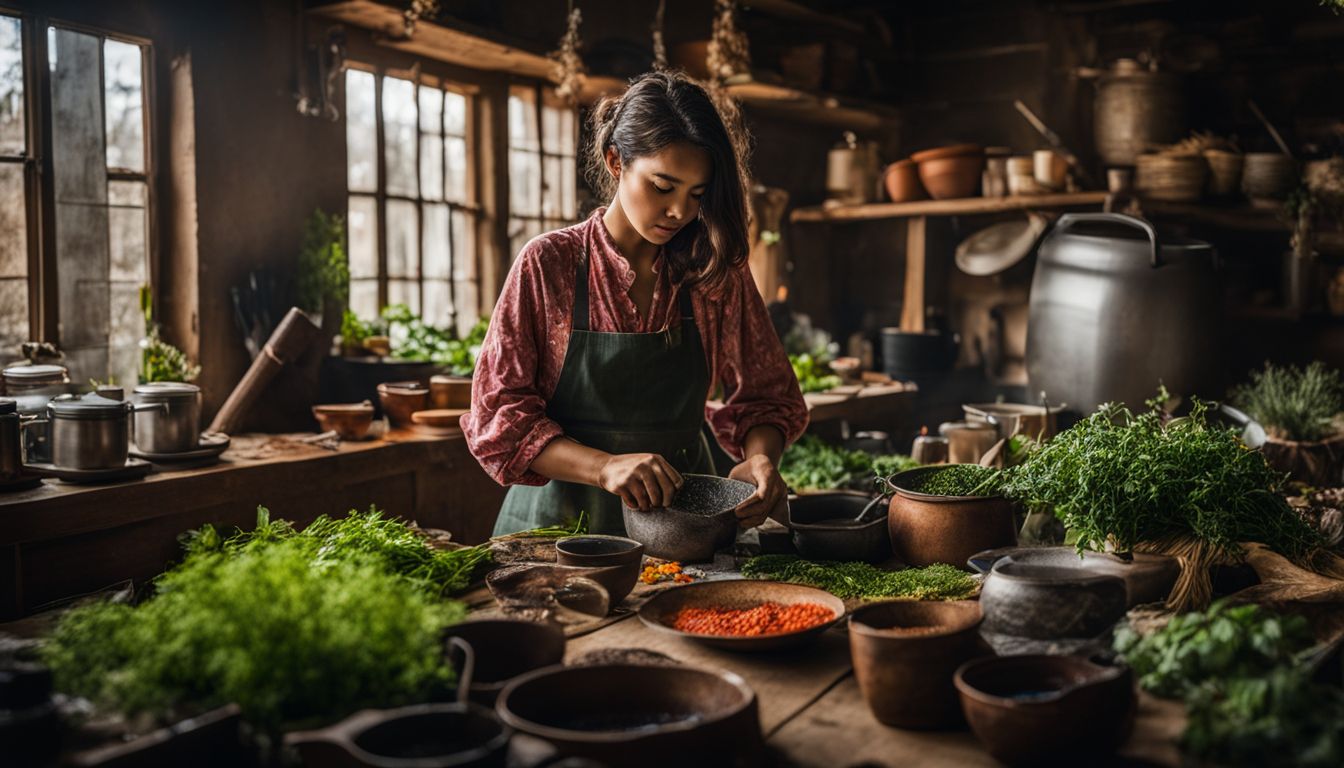
To make green dye at home, you will need the following materials and equipment:
- Plant material (such as spinach, grass, or mint leaves)
- Water
- Large pots or containers for boiling
- Strainer or cheesecloth
- Stove or hot plate for heating
- Heat – resistant gloves and apron for safety
- Glass or plastic jars for storing the dye
- Fixatives (such as salt or vinegar) to help the dye adhere to fabric
- Fabric or yarn to dye (natural fibers like cotton, silk, or wool work best)
Tips for Successful Natural Dyeing

Collecting the right dyestuff is crucial to achieve vibrant green colors in your homemade dye. Extraction methods, such as boiling leaves with water or using indigo over-dyeing with yellow, can enhance the color intensity.
Additionally, don’t forget to consider modifying colors by experimenting with different ingredients and techniques for a unique shade of green.
Collecting the right dyestuff

To make your own green dye at home, it’s important to collect the right dyestuff. You can use various plants and vegetables like spinach, grass, mint leaves, and black-eyed Susan to create natural dyes.
Additionally, you can also gather artichokes and chamomile leaves for different shades of green. By selecting these organic materials as your dyestuff, you’ll be able to create a beautiful homemade green dye that is eco-friendly and safe to use on fabrics.
Remember to choose fresh and vibrant plant matter for the best results in creating your own natural green dye at home!
Extracting the dye
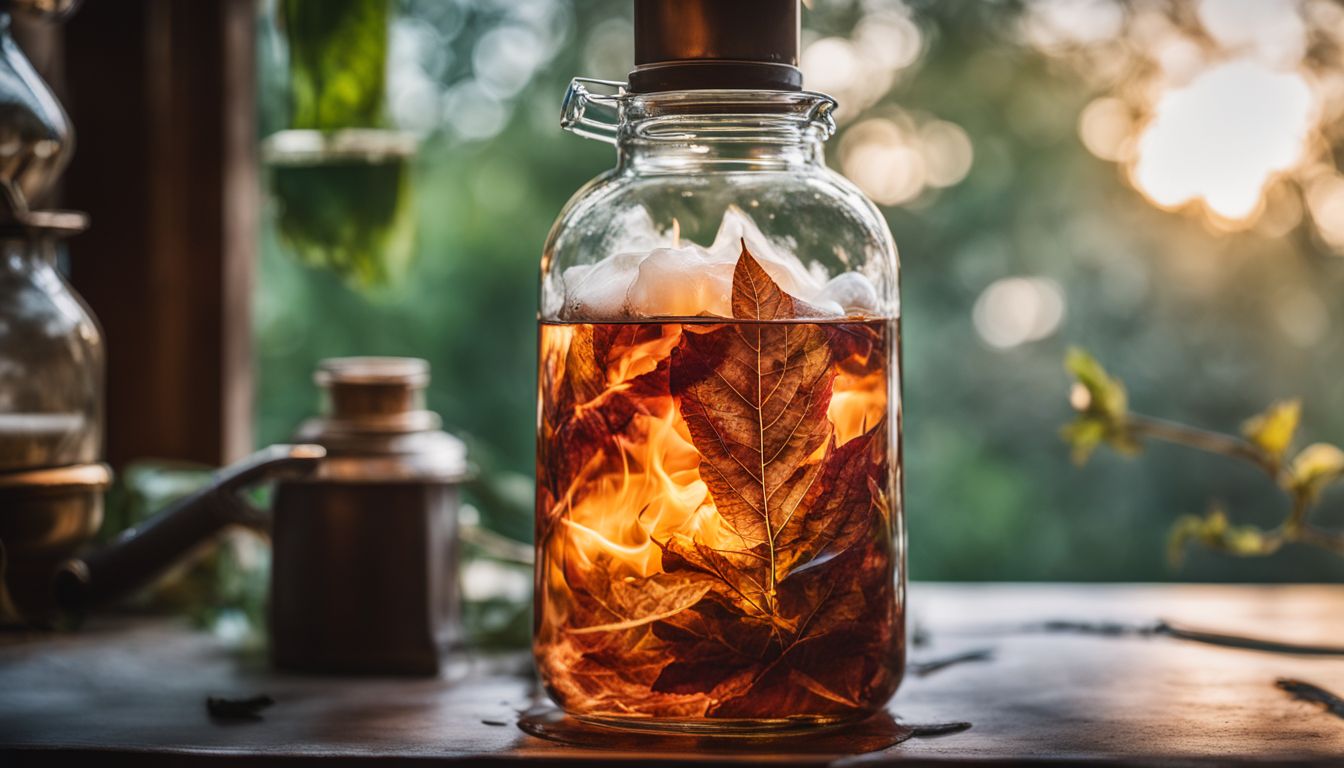
To extract the dye from plants and vegetables, there are a few simple methods you can try at home. One method is boiling leaves with water. By simmering the leaves in water for an extended period of time, you can create a light green dye.
Another method involves using indigo to make blue dye, which can then be over-dyed with yellow to achieve a vibrant green color. Additionally, chopping spinach and boiling it in water can produce a natural green dye that can also be used as a food coloring.
It’s important to dispose of the plant material and dye bath properly after extracting the dye.
Modifying colors (optional)
-ab642f964d-999461916.jpg)
If you want to change the color of your green dye, there are a few things you can do. Adding different ingredients or modifying the pH level can alter the shade of green. For example, adding lemon juice or vinegar can make the green color brighter and more vibrant.
On the other hand, adding baking soda or ammonia can make it darker and more muted. Experimenting with these modifications allows you to create custom shades of green that suit your preferences.
Just remember to start with small amounts and test on a sample fabric before dyeing your final project!
Conclusion
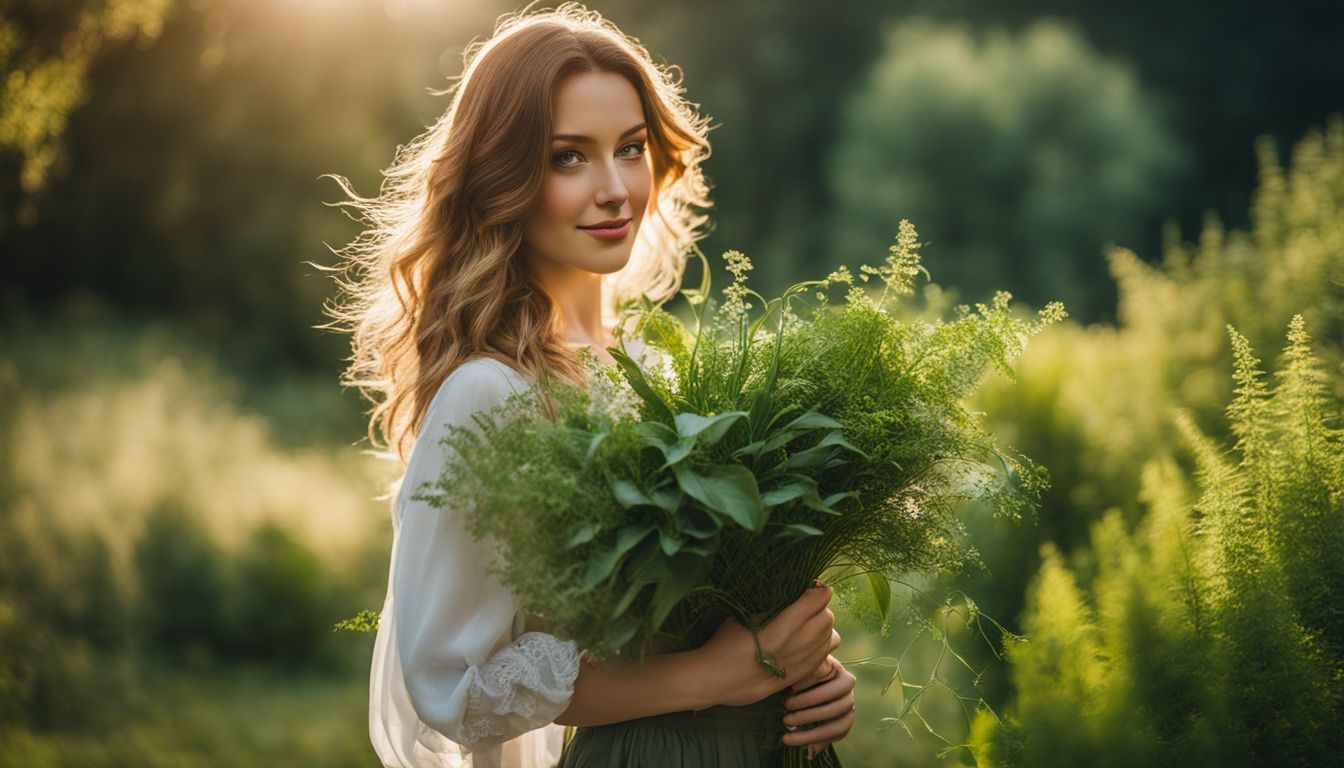
You can easily make green dye at home using natural ingredients like plants and vegetables. Boiling leaves with water or over-dyeing blue with yellow can create beautiful shades of green.
With some basic materials and techniques, you can experiment and have fun creating your own homemade green dye. So go ahead and explore the world of natural dyeing from the comfort of your own kitchen!
FAQs
1. What ingredients do I need to make green dye at home?
To make green dye at home, you will need natural materials such as spinach, kale, or avocado peels, water, and a pot for boiling.
2. How do I extract the color from the natural materials?
To extract the color from the natural materials, chop them into small pieces and add them to a pot of boiling water. Let it simmer for about an hour until the water turns green.
3. Can I use food coloring to make green dye at home?
Yes, you can use food coloring to make green dye at home by mixing blue and yellow food coloring together until you achieve your desired shade of green.
4. How long does homemade green dye last?
The shelf life of homemade green dye varies depending on storage conditions but generally lasts for several months if stored in an airtight container away from sunlight.







